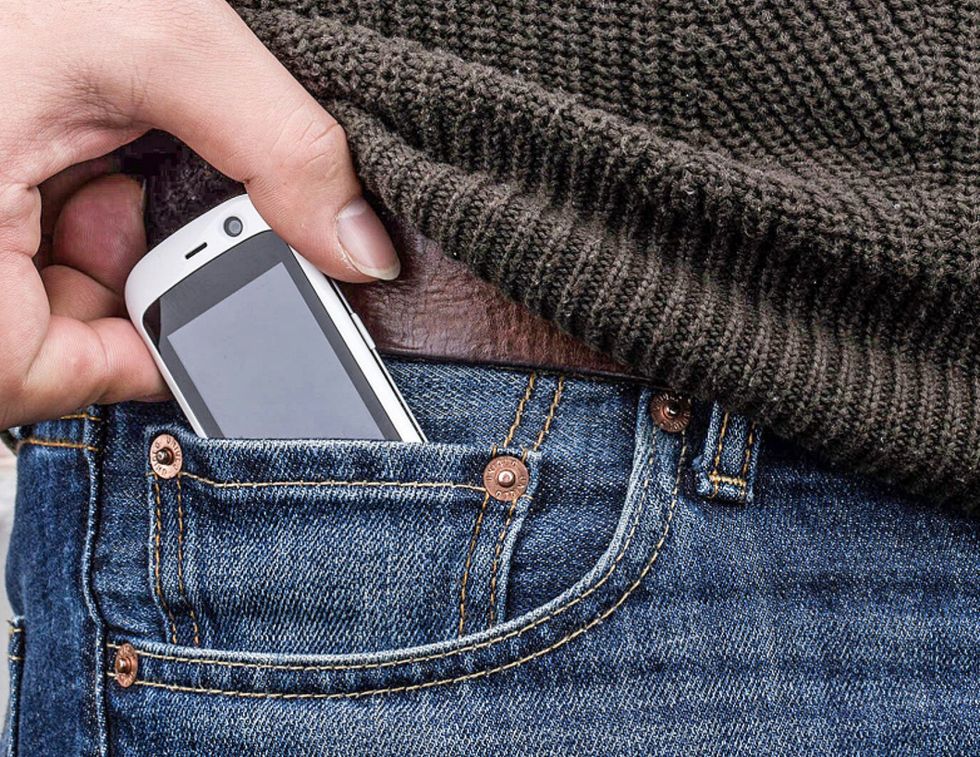Shanghai-based company Unihertz launched a new kickstarter on May 2 for what they tout as the "smallest 4G smartphone," called Jelly. Jelly boasts a tiny 2.45" screen with a resolution of 240x432 pixels, a brave move in a smartphone market where the reigning ideology is "bigger is better." Just take a look at Samsung's latest release, the Galaxy S8. The S8 has a display size of 5.8" and a screen resolution of up to 2960x1440. You might think that such a low-res phone would be a hard sell to today's consumers.
Consider that Jelly's kickstarter reached its goal of $30,000 pledged within fifty-seven minutes and, as of writing this article, is skyrocketing past $450,000 raised with 30 days left on the campaign. People are clamoring for this mini-smartphone, which is so small that it can fit into your jeans' coin pocket.
Let's look at the specs. I'll use the iPhone 7's specs for a common reference, and I'll also compare the Jelly's specs to my own android phone, a ZTE ZMAX 2. The ZMAX, it's worth noting, cost me only about $20 more than the Jelly, which sells on the kickstarter for about $79.
The Jelly has a quad-core 1.1 GHz processor, 1 GB of memory and 8 GB of internal storage, though with a microSD the Jelly can hold up to 32 GB of storage. The iPhone 7 has 2 GB RAM and, at its lowest, 32 GB storage and a 2.34 GHz quad-core processor; the ZMAX has a 1.2 GHz processor, 2 GB of RAM and 16 GB storage. In terms of processing power, then, while it doesn't keep up with the iPhone, it holds steady with my ZMAX, which is twice its size (5.5")!
Its camera isn't half bad, either. The Jelly manages to squeeze in both a front and a rear camera of 2 MP and 8 MP, respectively. The iPhone's camera specs are 7 MP and 12 MP, and the ZMAX's are also 2 MP and 8 MP. Again, the Jelly holds its own against my phone.
As for operating systems, the Jelly actually does better than the ZMAX (the iPhone is inapplicable here), running on the newest Android 7.0 Nougat OS to the ZMAX's Android 5.1. The Jelly also uniquely boasts two SIM card slots for the price of one, making it an excellent choice for travel. And if that didn't sell you, consider that the Jelly comes in three different colors: white, black and blue. It's not only functional, but also adorable!
So, now that we've laid out all of the numbers, how does the Jelly hold up to the competition?
For being half of its competitors' size...pretty good! If you care more about the basic functionality of your smartphone than having the best specs in everything, a 8/2 MP camera and 1.1 GHz processor are still totally comfortable to use. Of course, I imagine the tiny screen would be a nightmare for those with larger fingers or weak eyesight. However, if you're an avid traveler in need of an ultra-portable and functional smartphone or simply a person looking to minimize, you might want to give the Jelly a try.
















